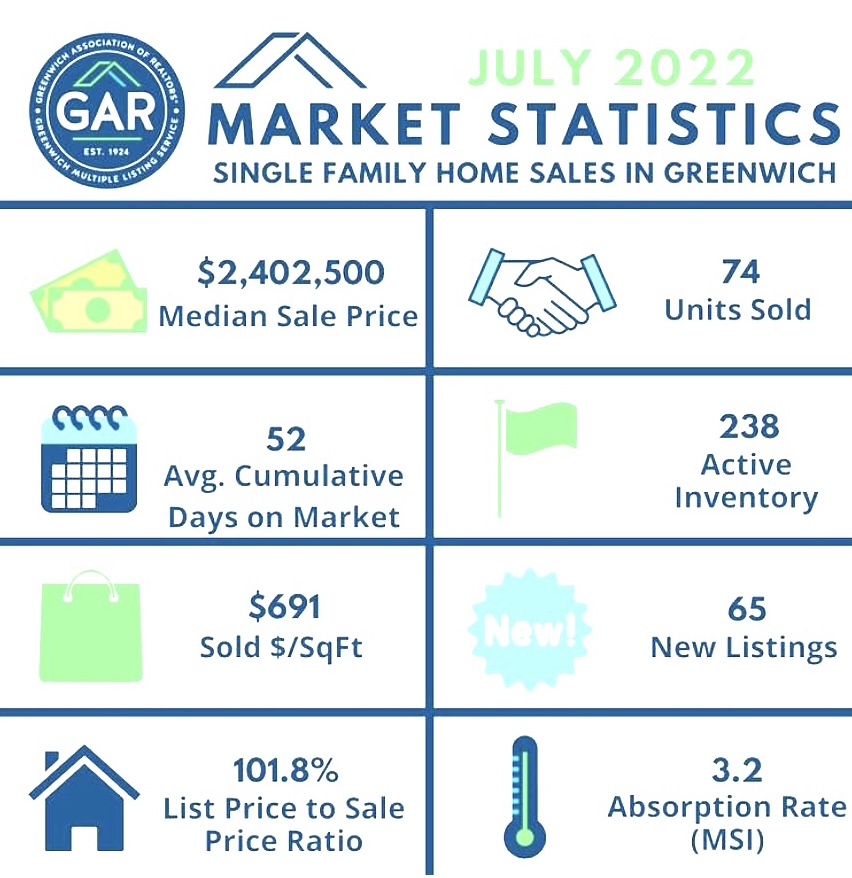Your future homeowner self will thank you for it.

Home buyers today have access to a wealth of information about the home-buying process before they even begin talking to a real estate agent. Friends and family, social media — everyone has a lot to offer. While much of this guidance can be good or well-meaning, some may be outdated or inappropriate for your situation. With that in mind, here are 13 home-buying myths you should beware of and the corresponding home-buying truths you should know.
Myth #1: You need a 20% down payment.
Fact: A 20% down payment hasn’t been required to buy a home for decades, if ever.
Many home loans allow a down payment as low as 3%, as long as your loan amount is less than the so-called “conforming” loan limit for the county where the home you want to buy is located. The limit for most counties is currently $647,200. Just keep in mind you will need to pay PMI (private mortgage insurance) on a conventional loan if you put down less than 20% of the home’s purchase price. Try our mortgage calculator to view an estimated calculation of your PMI based on your loan and down payment amounts.
Here’s a quick overview of some loan types with low down payment options:
HUD/FHA loans allow a 3.5% minimum down. HUD/FHA loans are insured by the Federal Housing Administration (FHA), within the U.S. Department of Housing and Urban Development (HUD).
USDA/RD loans don’t require a down payment. USDA/RD loans are backed by the Rural Development (RD) arm of the U.S. Department of Agriculture (USDA).
VA loans also allow 0% down. VA loans, primarily for active-duty and veteran military members, are guaranteed by the U.S. Department of Veterans Affairs (VA).
Small, specialty loan programs may also permit very low down payments. One example is a HUD Homes program in Florida that allows just $100 down for qualifying buyers with FHA financing.
All mortgage loans are subject to the lender’s guidelines, requirements and restrictions. Ask your mortgage loan officer for details.
Myth #2: Your preapproval rate is the rate you’ll get when you close.
Fact: Interest rates adjust daily. The rate you’re quoted in a preapproval is based on current market conditions as well as factors like your loan amount, credit score, property type and where the home is located. In general, your actual rate can’t be “locked in” until you find a home and sign a purchase contract with the seller.
“At that time, your loan officer can explain your options and help you choose a rate,” says Wesley Black*, a senior loan officer for Zillow Home Loans in Irvine, Calif.
Your locked-in rate may be higher or lower than your preapproval rate. But be aware that locked-in rates can expire, so you should ask how long yours will last.
Myth #3: You should wait to buy a home until prices are lower.
Fact: Buying a home after a big run up in prices may seem risky, but waiting carries some big risks as well.
“There’s no guarantee prices will fall,” says Zillow Senior Economist Jeff Tucker. “If they do, it may take a long time for them to reach their bottom. Meanwhile, you need a place to live. If you’re renting, you’re facing some of the fastest growth in rents on record. When prices begin to rise again, due to low inventory and high demand, it might be hard to find the right home.”
Myth #4: Buying a home is always cheaper and a better investment than renting.
Fact: Renting a home can sometimes be cheaper than buying, and home prices don’t always go up and up in a neat, straight line.
However, a home you own is an asset that can appreciate over time. A rental may appreciate as well, but as a renter, you won’t capture that additional value; the property’s owner will.
Myth #5: You have to find a home before you apply for a home loan.
Fact: Getting prequalified for a loan before you shop for a home is not only okay, it’s also smart.
Once you’re prequalified or preapproved for a mortgage, you’ll have an idea of how much you can borrow to buy a home, you can shop for homes in your price range and you won’t fall in love with a home outside your budget. If you’re not able to get pre approved, you’ll find out what you need to do to position yourself so that you can.
Myth #6: Buying a fixer-upper will save you money.
Fact: True “fixer-uppers” need a lot more than a fresh coat of paint. These homes generally have major problems that may not be visible. Even a skilled home inspector can’t see inside walls.
“If you’re looking into a fixer-upper, you should get quotes on the repairs needed beforehand,” says Korenn Meno**, a mortgage loan officer at Zillow Home Loans in Seattle, Wash. “You’ll have to be patient, good with finances and willing to sacrifice all your spare time to work on your home or go into debt to get your home fixed up.”
You may end up with a home you love, but you probably won’t save money with this strategy. (Take our quiz to see if tackling that fixer-upper is really right for you!)
Myth #7: You have to get your loan from the lender who preapproves you.
Fact: A preapproval is a great starting point for getting a mortgage loan, but you’re not obligated to stay with that lender. You can shop around for a lender that makes a competitive offer and is a good fit for you.
Just keep in mind that it’s best practice to shop for a lender before you go under contract or lock in a rate. However, once you are under contract and have completed inspections and appraisals, it is typically not a good idea to shop around for a new lender. If you do, you will need to notify the seller’s agent of the change. Any delays or changes could put you at a higher risk of getting your offer rejected by the seller.
Myth #8: You shouldn’t buy until you can afford your ‘forever’ home.
Fact: Selling a home can be costly, but if you wait to buy until you can afford your “forever” home rather than buy a lower-cost “starter” home, you may never buy at all.
Or, you may miss out on years of equity building and price appreciation that could offset your selling costs when you trade up to your forever home.
Caveat: Considering a home you already know that you’ll outgrow in the very near future? It may make sense to wait until you find a home where you can stay at least a few years. “It’s a common rule of thumb to only buy a home you expect to spend at least five years living in, and ideally longer,” Tucker says. “It’s hard to know what the future holds, but some parts of careers and family life do have predictable changes, so if you’re considering a home that you can already foresee your household outgrowing in the near future, it probably makes more sense to shop for one better-suited to the long haul.”
Myth #9: A 30-year, fixed-rate mortgage is always the best choice.
Fact: Depending on rate movements, adjustable-rate mortgages (ARMs) can save thousands of dollars of interest over the life of the loan compared with a fixed rate. ARMs have an initial fixed rate period, and then can adjust up or down, resulting in monthly payments that can change over time.
“Finding the right loan program and term is kind of like picking an outfit,” says Black. “Everyone is going to want or need something slightly specific to fit their unique situation.”
ARMs aren’t a fit for everyone, but for many, they are worth considering.
Myth #10: You can’t buy a home if you have student loans.
Fact: Student loans can both help and hurt your chances of buying a home.
The potential help comes from boosting your credit scores, if you make your payments on time. The potential hurt comes from raising your debt-to-income ratio, or DTI, which is a factor in loan approval. Student loans are not an automatic barrier. They’re just another form of debt that’s part of your DTI calculation. Many people have student loans and a home mortgage.
Myth #11: You have to pay the seller’s asking price to buy a home.
Fact: The seller’s asking price is the amount the seller hopes you’ll pay, but it’s not necessarily the price you’ll actually pay.
This may seem obvious, but home prices are typically negotiated with offers and counter-offers until you and the seller agree on a price. Be sure to ask your agent for “comps” for a home you’re interested in — this is a report of prices of recently sold, similar homes nearby — in order to draft a competitive offer or understand whether the listing price fits in your budget.
Myth #12: You need excellent credit to buy a home.
Fact: Good home loans and attractive rates are available for people with less-than-perfect credit as well as those with excellent credit.
Who can’t qualify? People who develop a habit of always paying cash for their purchases. “Establishing positive tradelines and using credit responsibly is what we’re looking for,” says Casey Godwin***, a mortgage loan officer for Zillow Home Loans in Overland Park, Kansas.
Myth #13: Fall and winter are bad times to buy a home.
Fact: Fall and winter can be advantageous times of the year to buy a home.
Spring is sometimes called the “home-buying season” because many families prefer to move when their children are out of school for the summer. That doesn’t mean you have to buy in the spring or that you’ll pay less if you do.
* Wesley Black, NMLS# 1889226
**Korenn Meno, NMLS# 1876162
***Casey Godwin, NMLS# 1540246

 Facebook
Facebook
 X
X
 Pinterest
Pinterest
 Copy Link
Copy Link








